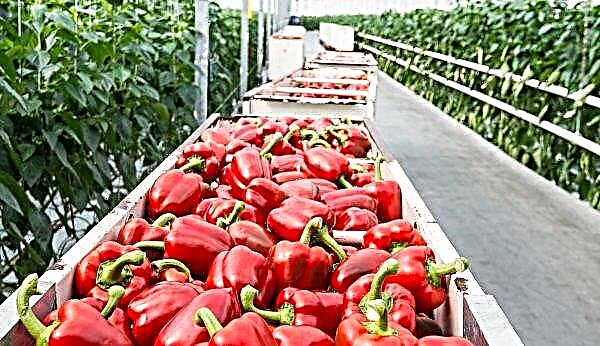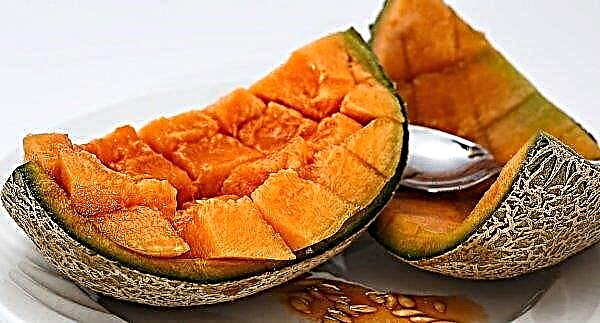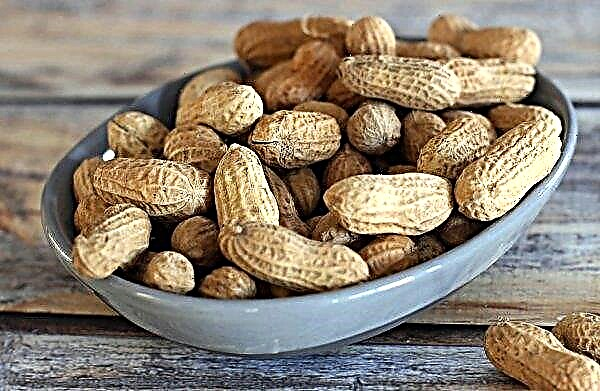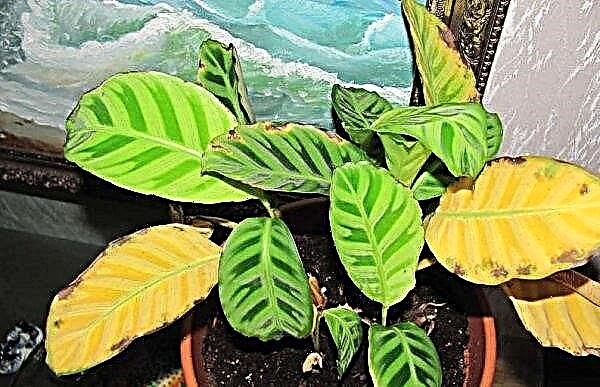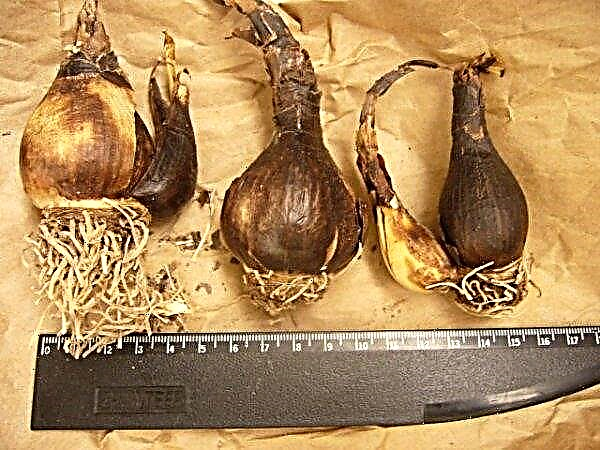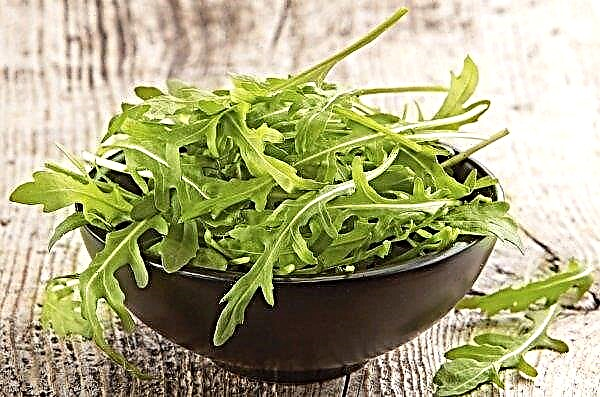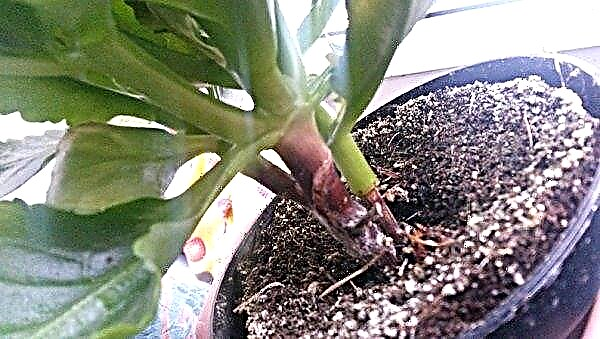Lovers of indoor plants are familiar with the elephant yucca, which looks like a palm tree: many appreciate it for its unpretentiousness and ability to decorate any interior. Today you can learn how to properly grow this plant and insure yourself against probable difficulties in its maintenance.
Botanical description of the plant
Elephant Yucca (Latin: Yucca elephantipes) is also known to science under the name Yucca giant (Latin: Yucca gigantea), and in common people it was called a false palm. The natural habitat of this species is the countries of Central America and the east of Mexico, where its representatives grow up to 6–9 m high and 4.5 m wide crown. At home, plant growth usually does not exceed 3 m.
This yucca owes its name to the fact that in a mature representative the trunk resembles an elephant’s leg - it gradually becomes stiff, it becomes thicker below, the lower leaves die off. The trunk of the plant can also branch. The hard leaves of the plant are of the lanceolate type, they have sharp, slightly jagged edges. In nature, their length can reach 1.2 m with a width of 8 cm.It blooms in summer and autumn in large flowers, shaped like bells, white, collected in a brush. Flowering almost always occurs only in open ground under warm climatic conditions. Flowers are protected by perianth of 6 leaves. During flowering, an ovary is formed from many ovules. Pestle short, three-bladed. Fruits yucca with juicy brown oval fruits that reach a length of 2.5 cm.
Did you know? Fibers of another representative of the genus - yucca filament, in the United States are added to the fabric for sewing jeans, which increases its strength.
Prerequisites and proper care
In order for the flower in question to grow well, it must be taken care of in accordance with the requirements, which we will consider in detail below.
Purchase and adaptation
Changing the environment is stressful for the plant, so after the acquisition you need to give it time to get used to the new conditions. The sellers make a lot of efforts to make the yucca look attractive - treat it with growth hormones, fungicides, give a lot of artificial light, moisturize the air, etc. Once in your home, without all these specific conditions, the plant will begin to wither, so it’s important to follow the adaptation rules .
Did you know? Most often, we get seedlings of yucca elephant from Guatemala.
In order for the plant to better survive the changes, the following must be done:
- Carefully inspect the palm when buying.
- Realistically assess their capabilities in following the rules for caring for her.
- Gently transport the yucca, pack it well.
- Upon arrival, put the pot where it is coldest, leaving it in the package for 0.5 hours.
- After removing the packaging, inspect for damage during transportation, remove the broken parts, sprinkle the cut with charcoal.
- If the middle layer of soil has not dried out, water no earlier than 2 days later.
- Quarantine for 3–20 days - put the pot away from other indoor plants in the part of the house with dim lighting, where there will be the minimum allowed air temperature, removing from the through wind and batteries. Inspect the plant regularly for signs of disease or pests. As soon as you notice signs of the beginning of growth, quarantine can be ended, and the pot of yucca can be moved to a permanent place.

Transfer
Yucca is not recommended to be transplanted immediately after purchase, since you should not expose the plant to additional stress. The procedure is carried out only after the end of the rest period, preferably in April, and only if the pot becomes too small. An exception can be a soil that is heavily infected or completely braided by the roots, but you still do not need to transplant the plant before the end of the quarantine period. The frequency of transplants is approximately 1 time in 2-3 years. Clay or ceramic pots are considered the best, although you can use plastic ones.
Important! An elephant yucca cannot be transplanted if it blooms, buds appear on it during quarantine and dormancy. When transplanting from uncontaminated soil, you cannot separate it from the roots and wash them.
The main condition is that there should be a drainage hole in it, and its size should be selected so that it prevails over the previous one by no more than 3 cm.The drainage (expanded clay, brick fragments) is poured onto the bottom of the pot with a layer of at least 3 cm, sprinkled with soil on top. The palm is removed from the pot and, together with the old soil (if it is not affected by mold, fungi or pests), transferred to a new container. Around the perimeter and a little on top of the old soil, a new one is poured. The soil mix needs neutral, it can be bought in a store (universal) or prepared independently according to one of these recipes:
The soil mix needs neutral, it can be bought in a store (universal) or prepared independently according to one of these recipes:
- Mix the same amount of turf, leaf soil, humus, compost, coarse sand or perlite.
- Mix the same amount of coarse peat, coarse perlite, pine bark with pieces of about 2 cm in size, pebbles or dolomite gravel (1.2 cm in size), charcoal with 1 cm pieces, pumice, add a spoonful of bone meal.
Important! Be careful in the process transplantation — the elephant reacts very poorly to damage to the roots of yucca. Sprinkling with earth, consider: if the trunk is immersed in the ground more than 3 cm, the palm will begin to rot.
Video: transplanting yucca elephant
Lighting
To ensure a normal level of illumination, it is better to place the pot with a palm tree on a stand near windows facing south, southeast or southwest, so that direct sunlight does not burn it, and the battery is not too close. In winter, the plant must be highlighted artificially, lengthening daylight hours up to 16 hours.
Temperature mode
In the resting stage, the yucca needs a temperature not lower than + 8 ° С, in the vegetation stage - about + 24 ° С. A plant can tolerate higher temperatures if humidity levels increase. In addition, the access of fresh air to the plant is mandatory in the absence of drafts.
Watering and spraying
The approximate interval between watering the yucca is 7-14 days, while the outer layer of soil should dry out, and the leaves should not curl from lack of moisture. For irrigation, water is prepared in an amount of about 1.5 liters per 5 liters of soil, allowed to settle and warmed to room temperature. Spraying leads to decay of the palm; instead, you can use the method of wiping the leaves with a damp cloth - so you will not only increase the level of humidity, but also remove dust from the foliage.
Spraying leads to decay of the palm; instead, you can use the method of wiping the leaves with a damp cloth - so you will not only increase the level of humidity, but also remove dust from the foliage.
Fertilizer application
After transplanting in the right soil, there are enough useful substances to ensure stable plant growth throughout the year without additional fertilizers.
Feeding should not be carried out in quarantine and dormancy stages. Fertilize the soil once every 4 weeks between April and August with complex liquid fertilizers for palm trees and dracaena.
Pruning
Pruning this palm tree is necessary to form a beautiful crown or reduce growth when it is very stretched up. The procedure is carried out in March, until the active period of the growing season has begun, using sharp disinfected scissors. The cut edge should be sprinkled with charcoal.
How to propagate at home
Elephant yucca is propagated by apical cuttings and parts of the trunk.
Apical cuttings
When pruning a palm tree, the cut off parts can be used using them as cuttings. They can be put in water until the roots appear or immediately installed in moist soil.
Parts of the trunk
For breeding, parts of the trunk are sawn into small pieces about 10 cm in size, placed on a plane to dry, then moved to a pot with moistened soil.
Possible growing difficulties
When cultivating a yucca, one can encounter harmful insects and diseases, the cause of which is incorrectly created conditions.
For this species, such insects are harmful:
- thrips;
- caterpillars
- spider mite;
- scale shield;
- aphid.
Important! If the yucca ivory yellow and dry the lower leaves - this for the most part natural processwhen an adult plant gets rid of the bottom of the foliage. Yellowing of the foliage on top of the crown or at the tips indicates the presence of problems.
The following diseases cause great harm to palm:
- stem rot;
- botrytis mushroom;
- bacterial burn;
- brown spotting;
- gray spotting;
- root rot.


